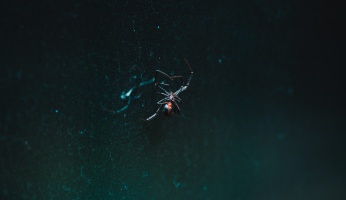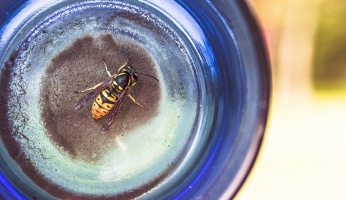Jellyfish Sting Treatment Options You Should Know About
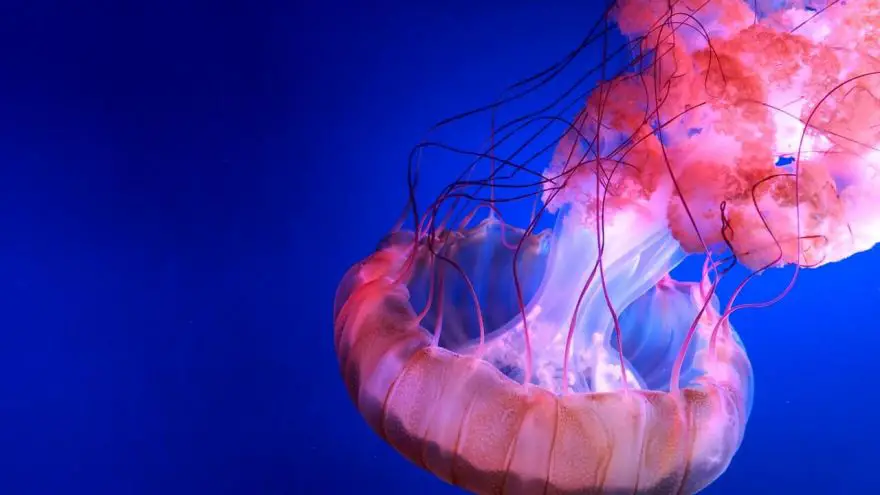 Jellyfish Sting Treatment Options You Should Know About
thegearhunt.com
Jellyfish Sting Treatment Options You Should Know About
thegearhunt.com
Jellyfish are non-aggressive, free swimming, gelatinous sea creatures that are surrounded by tentacles. These tentacles have sacs (stinging cells or nematocysts) all over them that are filled with a certain poison. This poison can cause very painful, and at times, life-threatening stings. Aquatic animals that are in this family include:
- Jellyfish
- Portuguese Man-o-War
- Sea nettle
- Fire coral
- Sea wasps (box jellyfish)
- Hydroids
- anemones
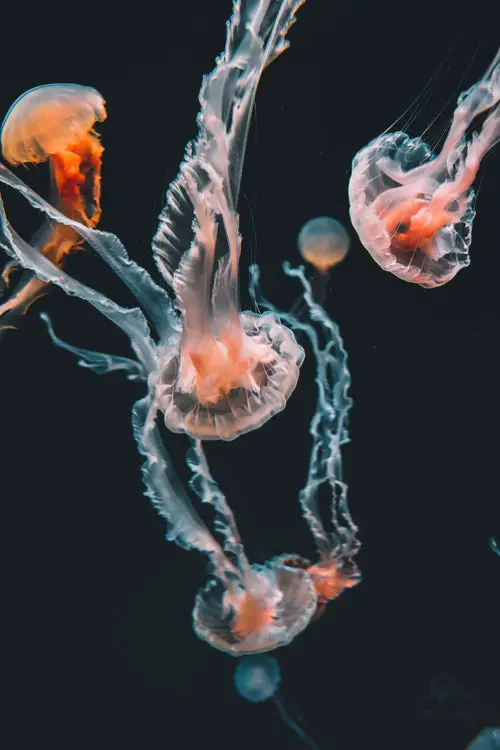
Jellyfish are found all over the planet, but the ones that are the most dangerous are found in Australian and Indo-Pacific waters. One example would be the Irukandji jellyfish. When the light is dim, they are even found near the surface, floating in a column of water, or even dying after they have washed up on the shore. Most of the time, jellyfish stings are by accident. They happen when people try to handle them, or when they wade or swim right into them. Some species of jellyfish have what is known as reproductive jelly gatherings. These tend to occur 8 – 10 days following the occurrence of a full moon. During this time, there can be an increase in the amount of jellyfish in the water where this takes place. There are more than 200 documented types of jellyfish.
Symptoms and Signs of a Jellyfish Sting
Symptoms of a jellyfish sting include raised welts, rash, itching, and a stinging, intense pain. The progressive effects of a sting of this nature can include muscle spasms, coma, tingling and/or numbness, abdominal pain, swelling in the lymph nodes, diarrhea, vomiting, and nausea. Severe reactions might lead to coma, difficulty breathing, and even death. Being stung by a box jellyfish or by some other type of venomous jellyfish can mean that you only have a few minutes to live.
Calling the Doctor
You should always seek medical treatment immediately if someone was stung and is exhibiting:
- intense pain where they were stung, chest pain, difficulty swallowing or breathing,
- If the victim for some inane reason was stung in the mouth because they put the tentacles there and they are having swelling of the lips or tongue, difficulty swallowing, or voice changes,
- If the person stung is either very old or very young,
- If the area stung is a large one on the genitals, face, or body,
- If the victim continues to have swelling of the skin, pain, redness, and itching right in the area of the sting.
Treatments for Jellyfish Stings
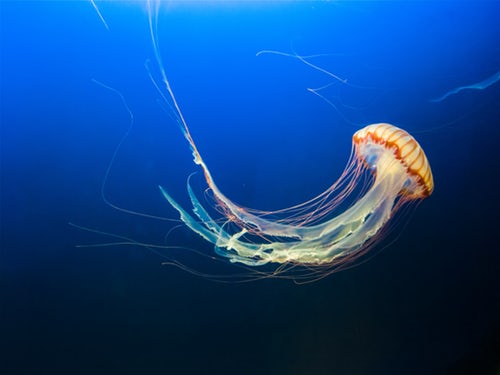 If you see a doctor for a severe jellyfish sting, he might prescribe something like:
If you see a doctor for a severe jellyfish sting, he might prescribe something like:
- Diphenhydramine that will assist with the itchiness,
- Medication for pain,
- Oral or topical steroids to assist with the itching and swelling,
- If there is the presence of cellulitis, there may also be a prescription for antibiotics.
- If it has been more than a decade since your last tetanus shot, you might get one of these too.
Home Remedies
If you have been stung by a box jellyfish, you should immediately seek medical help. While you are waiting for that help, keep the site flooded with vinegar and be as still as you can be. If medical care isn’t anywhere near you, soak the tentacles and site of the sting for a minimum of 10 minutes before you try to remove them. If the sting happens to be in the legs or arm, you might place a bandage or pressure dressing around the area. Be sure that you don’t stop the circulation. Your toes and fingers should always remain pink. This will help with slowing down the spread of the poison.
For stings from other types of jellyfish, rinsing or soaking the area in vinegar for about a half hour will stop the stingers from releasing any more venom. If there isn’t any vinegar available, rinse the area in either seawater, Safe Sea Jellyfish After Sting, or 70% isopropyl alcohol. Never use fresh water. This will leave the stingers free to continue releasing the toxin. For this same reason, don’t apply hot water or ice, and don’t rub the area.
You can get the tentacles off with a pair of tweezers or a stick. If you have gloves, wear them.
Apply either a paste made of baking soda or even a bit of shaving cream to the area. Proceed to shave that area using either a credit card or a razor to get rid of any nematocysts that may be remaining. Once that is done, reapply the alcohol or vinegar. The paste or the shaving cream will prevent any nematocysts that haven’t been activated from releasing any toxins while you remove the with the credit card or razor.
Stings in the eye need to be rinsed with a saline solution that is commercially available – like Artificial Tears. Daub the skin surrounding the eye with a towel that you have soaked in vinegar. Never put the vinegar in your eyes.
Stings in the area of the mouth need to be treated with vinegar that is ¼ the normal strength. To get that, just mix ¾ cup of water with ¼ cup of vinegar. Gargle with it and then spit it out. Never swallow this solution.
For your pain, you can take any OTC pain reliever, such as Tylenol, Aleve, or Motrin. Take as directed on the bottle.
CPR might be a necessity if the person who was stung has stopped breathing and has no pulse.
Watch For an Allergic Reaction and Be Careful
The thing about jellyfish is that they have a tendency to just sneak up on you. You can be swimming along in the ocean, minding your own business, when all of a sudden, your leg feels like it is on fire.
You need to remain safe. Remember that the tentacles of a jellyfish can sting you even after they are no longer attached to the jellyfish. The tentacles of a jellyfish that still happen to be on your skin are still able to sting you if more bare skin comes into contact with them.
Steps
There are basically 3 different steps when it comes to treating the stings of jellyfish.
- Rinse
- Get the tentacles off
- Hot Bath
To achieve the best results, these steps need to be followed in order. Things like Tylenol, Motrin, or Advil will help with alleviating the pain. Heat and/or ice might help. You can alleviate mild itchiness with Benadryl, but keep an eye out for anaphylaxis, which is an allergic reaction that can be deadly. Anaphylaxis will present as:
- Itching
- Wheezing, tightening of the throat, shortness of breath
- Weakness
- Hives
- Flushed skin
- Dizziness
Anaphylaxis also sometimes causes the blood pressure to drop, which will result in anaphylactic shock.
The Sting
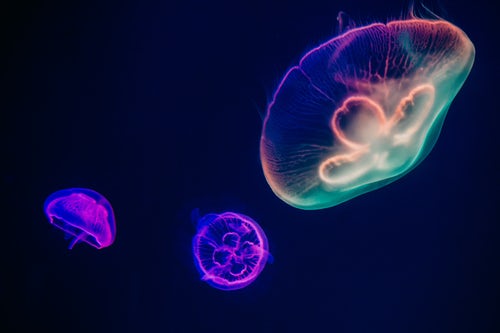 The stings from jellyfish come from specific cells that are called nematocysts. These are found in the tentacles of the jellyfish when they are bell-shaped jellyfish and with some species, they are found on the actual bell. These nematocysts inject a venom that is protein based. The most dangerous type of reaction to most stings by jellyfish is allergic ones. That being said, even if you don’t have an allergy to their venom, some of them have venom powerful enough to kill you in just a matter of minutes.
The stings from jellyfish come from specific cells that are called nematocysts. These are found in the tentacles of the jellyfish when they are bell-shaped jellyfish and with some species, they are found on the actual bell. These nematocysts inject a venom that is protein based. The most dangerous type of reaction to most stings by jellyfish is allergic ones. That being said, even if you don’t have an allergy to their venom, some of them have venom powerful enough to kill you in just a matter of minutes.
Rinse
Once you have been stung by a jellyfish, you will need to rinse the tentacles away with hot water. If hot water isn’t available, use salt water. Never use fresh water. Fresh water can actually make the pain of the sting worse.
When it comes to the standard first aid treatment, use plain white distilled vinegar. This is the type that you normally find in a kitchen. However, during the past few years, this treatment has become controversial and there have been quite a few studies that leave us wondering if it works or not. Vinegar is still always recommended for the sting of a box jellyfish. If you have vinegar available, it is worth a try, but don’t stop rinsing the sting until the vinegar is actually there to be used.
A very old home remedy says that you should have someone pee on the sting. Peeing on a jellyfish sting will likely not work. Some victims have reported that it eased the pain a bit, but urine isn’t typically acidic enough to get the venom neutralized. Examples of this working in reference to pain relief would more than likely have had the exact same or even better response from using hot or salt water. Whenever it is possible, use hot water.
Get the Tentacles Off
 Pull off any tentacles that remain with tweezers, a shell, stick, or a gloved hand. Be very careful not to let the tentacles touch any other exposed skin or get on your clothing. If you are using your bare hands to get them off, you will more than likely be stung on your fingers. This is why it is so important to get them off. Until you do, they will continue to sting.
Pull off any tentacles that remain with tweezers, a shell, stick, or a gloved hand. Be very careful not to let the tentacles touch any other exposed skin or get on your clothing. If you are using your bare hands to get them off, you will more than likely be stung on your fingers. This is why it is so important to get them off. Until you do, they will continue to sting.
Hot Bath
Immerse the area of the sting in hot water. The water should be over 102 degrees. The rule of thumb is to let the victim either immerse the sting or shower in the hottest water they can handle. Work the heat up little by little and take care that the victim doesn’t get scalded.
Jellyfish Sting Prevention
When you are swimming in areas where there are jellyfish, wear protective clothing, such as, dive skins, wetsuits, gloves, etc. Never pick up a jellyfish you see laying on the beach. They can still sting you, even after they are dry. Stay away from areas that are infested with this animal. If you do have to go into the water, at least find out what type of jellyfish you are dealing with.
Be ready to treat jellyfish stings. You should have a first aid kit, complete with an oral antihistamine, and bring it with you whenever you go to the beach. Also, taking a first aid course before going scuba diving, snorkeling, swimming, or to the beach is also recommended.
When you are scuba diving, snorkeling, or swimming in the evenings or when it is dark. Be careful to watch for jellyfish at or near the surface. When you are ascending while scuba diving, make sure that you expel the air from your alternate air source in order to disperse any jellyfish that might be above you. Don’t swim in those areas where a large number of jellyfish have been spotted. Wearing a Lycra dive skin or a wetsuit can prevent stings.
More than anything else, just be careful. Speaking from experience, jellyfish stings don’t feel good and will make you want to avoid the water for a long time.
Sources
- You Tube, First Aid Tips: How to Treat Jellyfish Stings
- Web MD, Jellyfish Sting Treatment
- Popular Science, You’re Treating Jellyfish Stings All Wrong
- Today I Found Out, How to Treat a Jellyfish Sting





